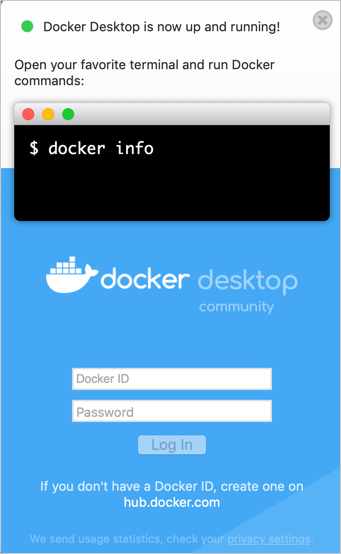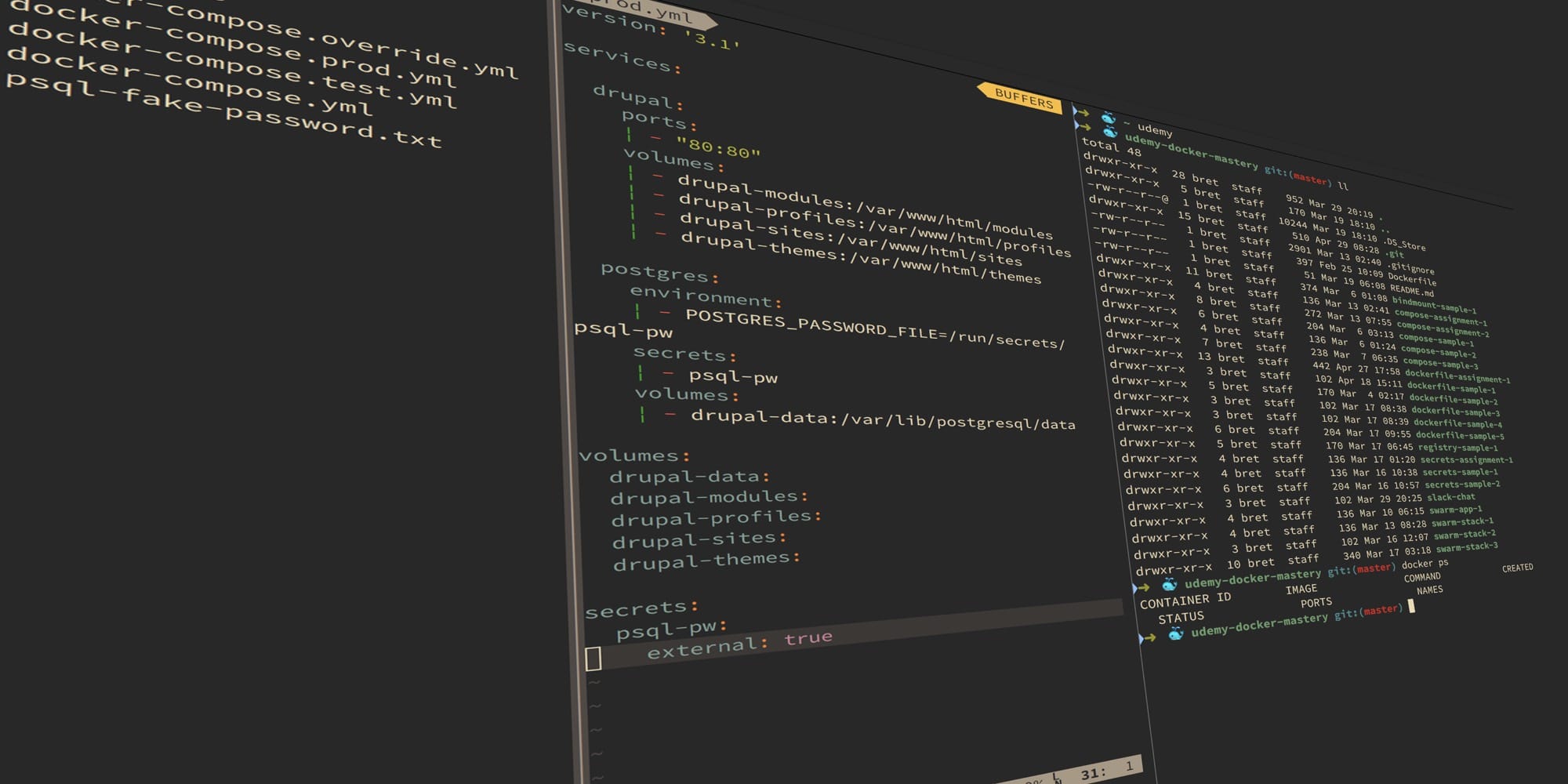

- #MAC INSTALL DOCKER TERMINAL SOFTWARE#
- #MAC INSTALL DOCKER TERMINAL LICENSE#
- #MAC INSTALL DOCKER TERMINAL DOWNLOAD#
- #MAC INSTALL DOCKER TERMINAL WINDOWS#
To automate setting DOCKER_HOST, you can place the export DOCKER_HOST=192.168.64.2 line at the bottom of your ~/.bash_profile file. This message shows that your installation appears to be working correctly. Below we run the sample hello-world container: export DOCKER_HOST =192.168.64.2 Docker commands should then work in that terminal session. You can export the variable to set it temporarily in just the current terminal. It should be the IP address of the VM, which can be obtained like this: multipass info my-docker Fortunately we can simply set the DOCKER_HOST environment variable to achieve this. Reconfigure Docker client on the hostĭocker commands that run on your machine (the host) need to contact the Docker daemon in the VM. You can press Ctrl+D to exit the VM terminal and return to the host.

We now need to restart the service to apply the changes: > sudo systemctl daemon-reload

The changed line should look like this: ExecStart =/usr/bin/dockerd -H fd:// -H tcp://0.0.0.0 -containerd=/run/containerd/containerd.sock We'll add another -H parameter to also listen on network interfaces ( -H tcp://0.0.0.0). The -H fd:// bit tells the daemon to listen on local sockets only. Still in the VM, we'll edit the daemon's service configuration file: > sudo nano /lib/systemd/system/rviceĪround line 12 you'll see something like this: ExecStart =/usr/bin/dockerd -H fd:// -containerd=/run/containerd/containerd.sock We need to change its configuration to make it available on the bridged network between the VM and your host machine, so that commands run on the host will contact the daemon on the VM. By default, the daemon only listens to requests from the VM itself. The daemon is installed as a system service, so it will auto-start with the VM. Once that is set up (the first time will take some time), access the VM and install the Docker daemon (in the examples below, the > prefix indicates that the command is being run in the VM): multipass shell my-docker multipass launch 20.04 -name my-docker -d 50G -m 2G
#MAC INSTALL DOCKER TERMINAL DOWNLOAD#
You can download multipass and run the installer or, if you use Homebrew, this will work too: brew install -cask multipassĬreate a new VM to run the Docker daemon I'm calling it my-docker - be creative with your naming! 😅 Note that I'm allocating a disk of up to 50GB and 2GB memory. We'll use the Multipass tool from Canonical, which allows running Ubuntu VMs with ease. We need to replace the virtual machine (VM) provided by Docker Desktop with our own. It should give out an error about not being able to connect to the Docker daemon. To make sure it is stopped, in Terminal try the command: docker ps

Below is a quick solution that I assembled from some documentation and miscellaneous Reddit posts, in order to run Docker on macOS.įirst, stop Docker Desktop if it's running (the little Docker logo on the notification area).
#MAC INSTALL DOCKER TERMINAL WINDOWS#
It is a very convenient way to run Docker on Windows and Mac, but it is in no way the only one. However, there is nothing forcing the use of Docker Desktop.
#MAC INSTALL DOCKER TERMINAL SOFTWARE#
Their licensing tiers are actually very sensible and I absolutely recommend that if you are using their software professionally, you should get a suitable license.
#MAC INSTALL DOCKER TERMINAL LICENSE#
That's all good - it's their product and they can obviously license it whichever way they want. Docker has announced that Docker Desktop is now subject to licensing.


 0 kommentar(er)
0 kommentar(er)
